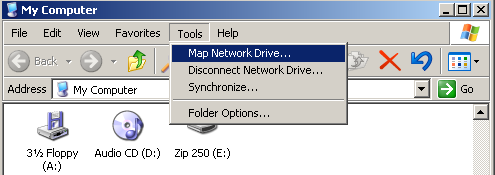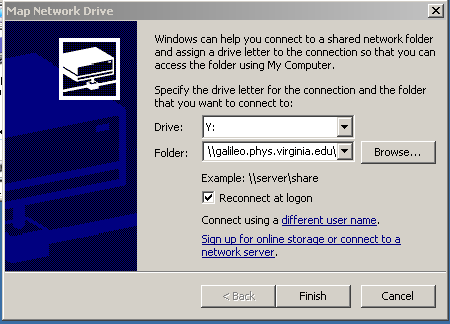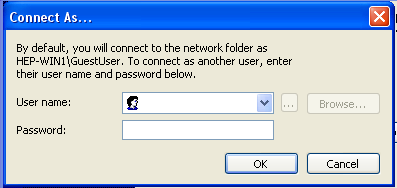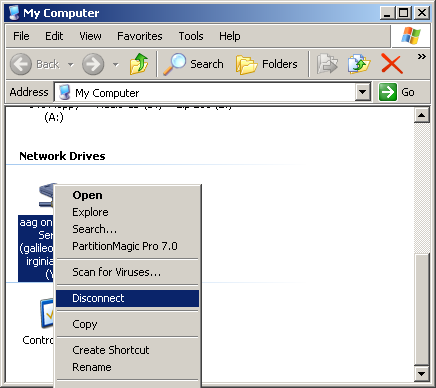
by Fred Ross & Chad Materniak
The Antimatter Asymmetry Group has an account named aag on galileo.phys.virginia.edu to store our group files. In addition, there is an aag group which should contain all accounts of AAG members on galileo.
You may access the space from a Windows machine with network drive mapping. In order for this to be possible, you need to contact Bryan Wright so he can add you to the aag group on Galileo, and Shawn Gimbert to obtain a password for accessing Windows computers on the Physics domain.
Open "My Computer". Select Tools->Map Network Drive... from the menu bar. This brings up the "Map Network Drive" dialog.

Choose the drive you want to map to, and put \\galileo.phys.virginia.edu\aag in the Folder line. Then click on "different user name" to bring up the "Connect As..." dialog.

Enter the username and password you use to access Windows computers on the Physics domain. Then hit OK, and Finish back in the "Map Network Drive" dialog.

You can open this drive and copy files to and from it as though it were a normal Windows drive. To disconnect, right click on the drive in My Computer and select "Disconnect".

ssh into galileo as aag (e.g., ssh aag@galileo.phys.virginia.edu); get the password from Craig. If you're already on galileo as another user, you can type su aag, and put into the password to become aag. Make sure you don't forget the argument, because su by itself tries to make you root, fails, and leaves an entry in the logs for Bryan to freak out over.
Once you're on as aag, you have full access to the AAG data as per norm on a unix box.
There is a subdirectory in the ~aag called group_website. This is a link to /home/httpd/html/research/groups/hep/aag. The files in this are all in the group aag. If you put a file there, please make sure you leave the group as aag and the permissions as 664. The owner need not be aag. To set these properties, use: chmod 664 filename and chown :aag filename (note the colon).